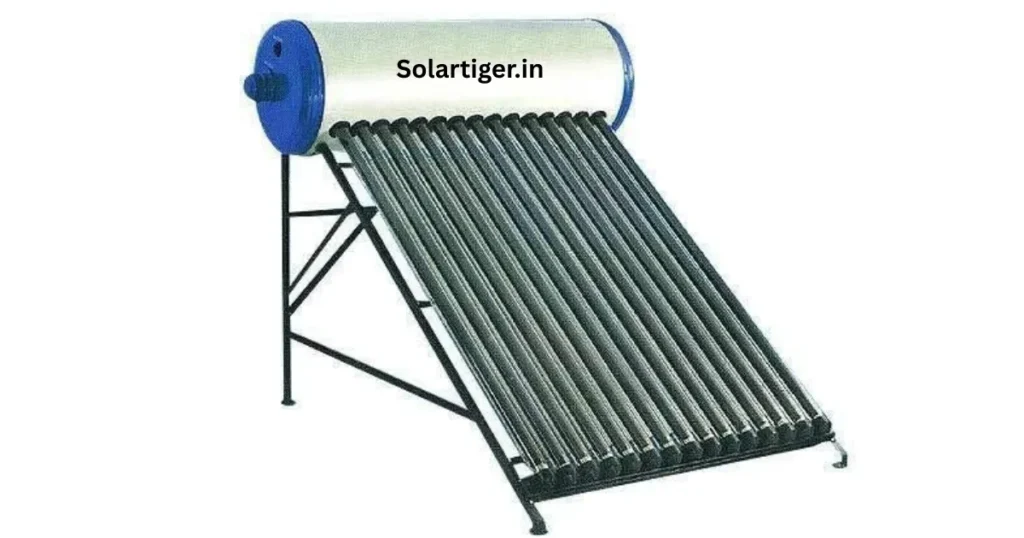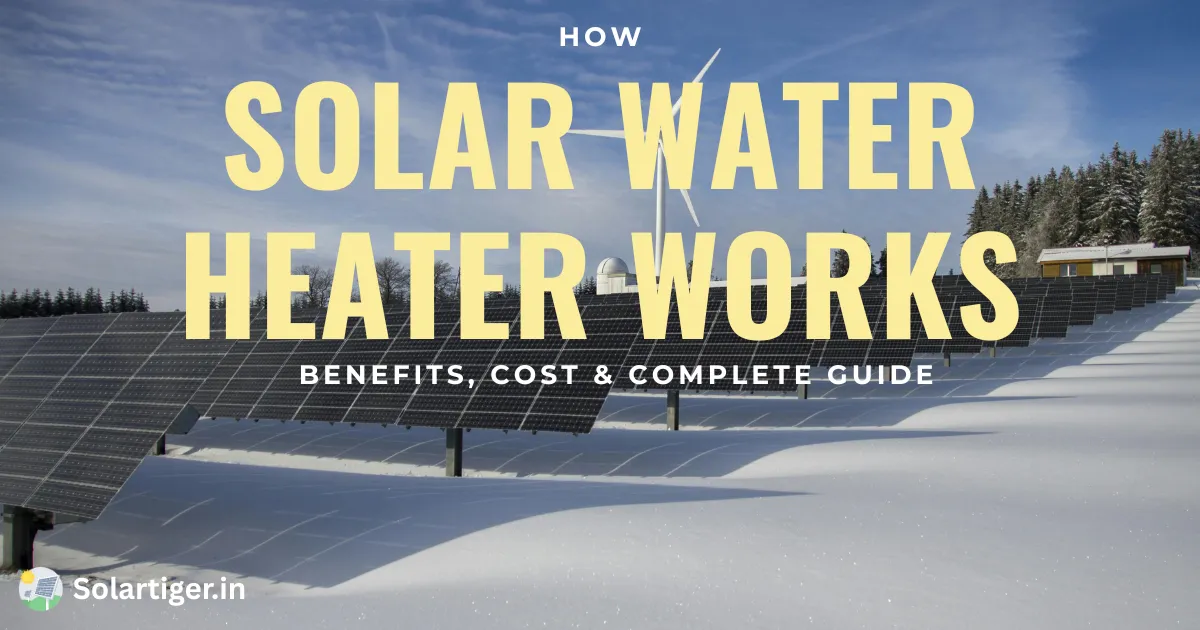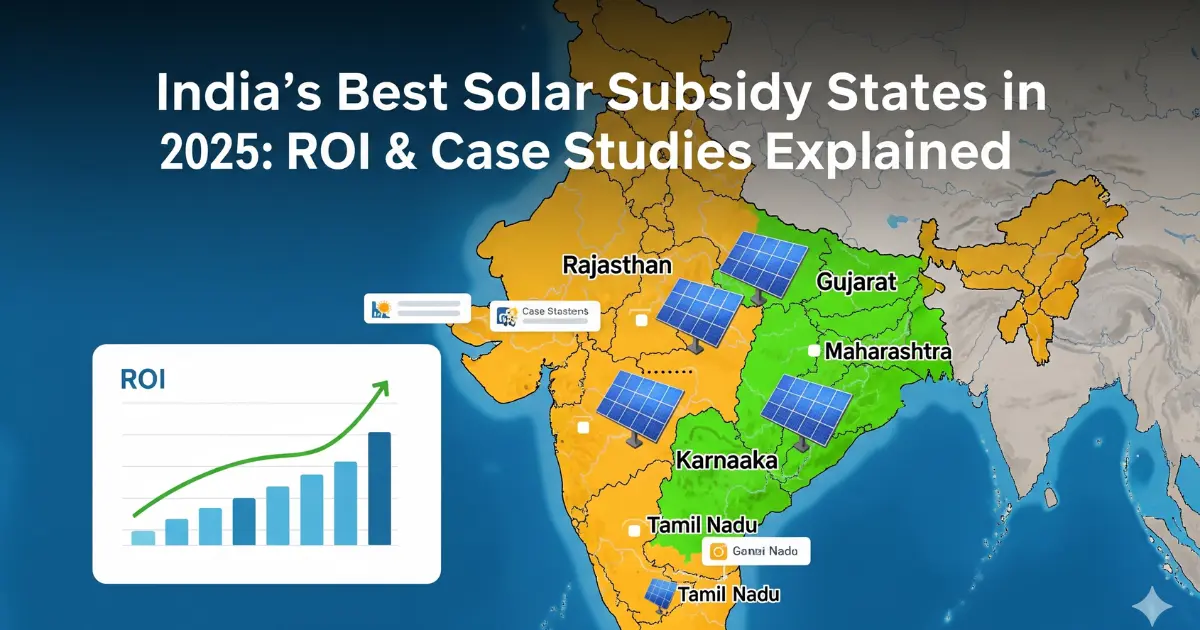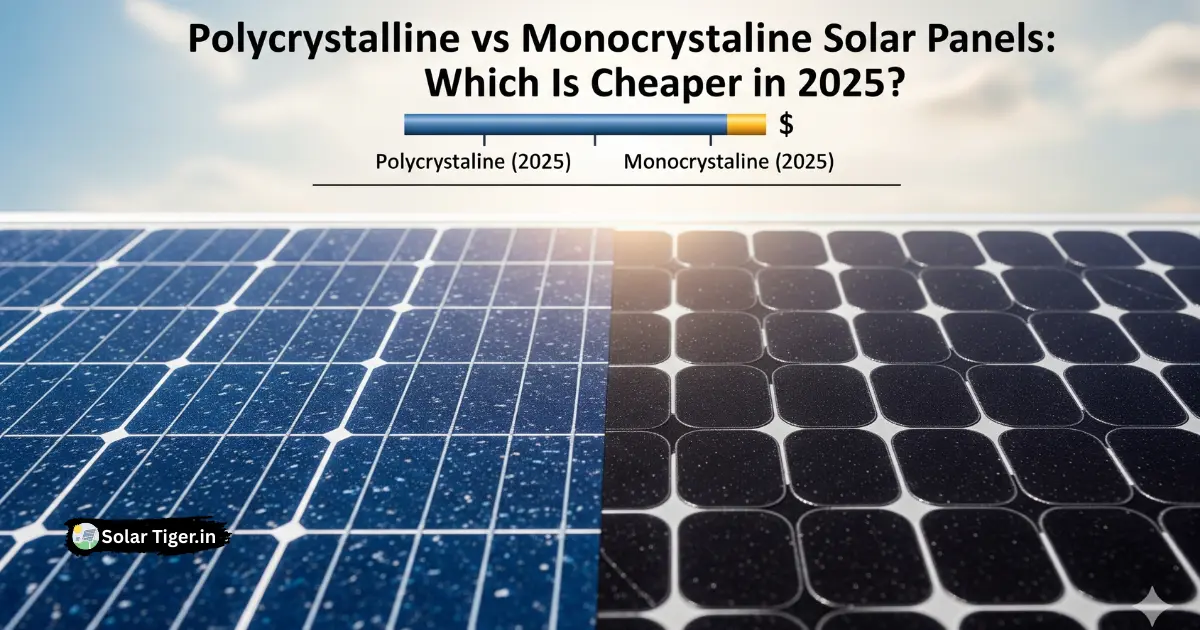Solar Water Heater Works: Facing higher electricity bills, many Indian households are switching to solar water heaters. These rooftop systems capture sunlight and convert it into heat for your water supply, reducing reliance on gas or grid power and cutting monthly costs. Read on for a clear, step-by-step explanation of how they work and what to expect from installation.
What is a Solar Water Heater?
A solar water heater (SWH) is a system that uses energy from the sun to heat water for domestic, commercial, or industrial use. Unlike solar panels that generate electricity, solar water heaters directly convert sunlight into heat through collectors.
They are commonly installed on rooftops where they can receive maximum sunlight throughout the day.
Key Components of a Solar Water Heater
- Solar Collectors
- These are panels or tubes placed on the roof.
- They absorb sunlight and transfer the heat to water.
- Two main types:
- Flat Plate Collectors (FPC): Made of metal plates and insulated boxes.
- Evacuated Tube Collectors (ETC): Made of parallel glass tubes, more efficient in colder regions.
- Storage Tank
- A well-insulated tank where hot water is stored.
- Designed to keep water warm for long hours.
- Piping & Circulation System
- Connects collectors and tanks.
- Water either flows naturally (thermosiphon system) or through a pump (forced circulation).
- Controller & Backup Heater (Optional)
- A backup electric heater may be used during cloudy days.
- Smart controllers manage water flow and temperature.
How Does a Solar Water Heater Works?
The working principle is simple: sunlight heats water inside collectors, and the hot water is stored in an insulated tank.

Step-by-Step Process:
- Sunlight Absorption
- Solar collectors absorb solar radiation.
- In FPC, a black-coated metal plate absorbs heat.
- In ETC, vacuum glass tubes trap heat efficiently.
- Heat Transfer to Water
- The absorbed heat warms the water inside the tubes/pipes.
- Hot Water Rises
- Hot water is lighter than cold water, so it naturally rises to the storage tank (thermosiphon effect).
- Cold Water Replaces It
- Cold water flows down into the collectors, creating a continuous cycle.
- Hot Water Storage
- The insulated tank keeps the water hot for use during day and night.
Types of Solar Water Heaters
- Flat Plate Collector (FPC) System
- Suitable for sunny regions.
- Durable but less efficient in colder climates.
- Evacuated Tube Collector (ETC) System
- Best for areas with cold weather.
- High efficiency due to vacuum tubes.
- Thermosiphon System
- Works on natural circulation.
- No pump required, low maintenance.
- Forced Circulation System
- Uses a pump for water flow.
- Ideal for large-scale applications.
Benefits of Using Solar Water Heaters
- Reduced Electricity Bills – Saves up to 70% on water heating costs.
- Eco-Friendly – No greenhouse gas emissions.
- Low Maintenance – Simple design, minimal moving parts.
- Long Life – Can last 15–20 years with proper care.
- Government Subsidies – Many states in India provide financial support.
Solar Water Heater Cost in India (2025 Estimates)
| Capacity | Family Size | Cost Range (INR) | Type Recommended |
|---|---|---|---|
| 100 Liters | 3–4 people | ₹18,000 – ₹25,000 | ETC |
| 200 Liters | 5–6 people | ₹30,000 – ₹40,000 | ETC/FPC |
| 300 Liters | 6–8 people | ₹45,000 – ₹55,000 | FPC |
| 500 Liters | Hotels/Hostels | ₹80,000 – ₹1,20,000 | FPC |
| 1000 Liters+ | Industrial Use | ₹2 Lakh+ | FPC/Forced System |
Note: Prices may vary depending on the brand, type, and location.
Government Subsidy on Solar Water Heaters in India

Yes, many states in India, along with the Ministry of New and Renewable Energy (MNRE), offer subsidies of up to 30–40% on solar water heaters. This reduces the upfront cost and makes the switch to solar more affordable for households. The exact subsidy you can get depends on your state’s policy, the size of the system, and whether it’s being installed for domestic, institutional, or commercial use.
Factors Affecting Solar Water Heater Efficiency
- Sunlight Availability – More sunshine = higher efficiency.
- Collector Type – ETC works better in cold weather than FPC.
- Water Quality – Hard water may cause scaling; soft water improves performance.
- Insulation Quality – Better insulation keeps water hot longer.
- Tilt Angle & Orientation – Collectors should face south (in India) for maximum exposure.
Maintenance Tips for Longer Life
- Clean collectors every few weeks to remove dust.
- Check for leakage in pipes.
- Descale the tank and tubes if water is hard.
- Inspect insulation regularly.
- Service once a year for best results.
Real-Life Example:
A Family in Pune
The Deshmukh family in Pune installed a 300-liter FPC (Flat Plate Collector) solar water heater for their independent house. The total cost was around ₹55,000, but with a 30% subsidy, they paid only about ₹38,500. Their electricity savings average ₹1,000–1,200 per month. The system paid for itself in just under 3.5 years. Today, they have hot water even on slightly cloudy days, and the system has required only routine cleaning.
An Apartment in Bengaluru
In Bengaluru, the Reddy family lives in a small apartment complex that opted for a 500-liter solar water heating system for multiple households. The cost was about ₹1.2 lakh, and with the state subsidy, residents contributed much less individually. Each family now saves roughly ₹800 per month on electricity or LPG costs. The system’s shared payback period is about 4 years, and residents benefit from a reliable hot water supply without worrying about rising energy bills.
A Household in Delhi
The Mehra family in Delhi installed a compact 100-liter ETC solar water heater for their 3-member household. The system cost about ₹18,000 after subsidy. Though small, it meets their daily hot water needs and saves them ₹400–500 each month. Their payback period is just over 3 years, and they have peace of mind knowing they are using an eco-friendly and cost-effective solution.
FAQs related to how Solar Water Heater Works
How long does water stay hot in a solar water heater?
Can a solar water heater work on cloudy days?
What is the lifespan of a solar water heater?
Which is better: Flat Plate or Evacuated Tube?
Is subsidy available on solar water heaters in India?
Conclusion
A solar water heater is one of the simplest and most effective ways to use renewable energy at home. It reduces costs, saves electricity, and helps the environment. With India’s push for solar adoption, installing one can be a smart and long-term investment.






